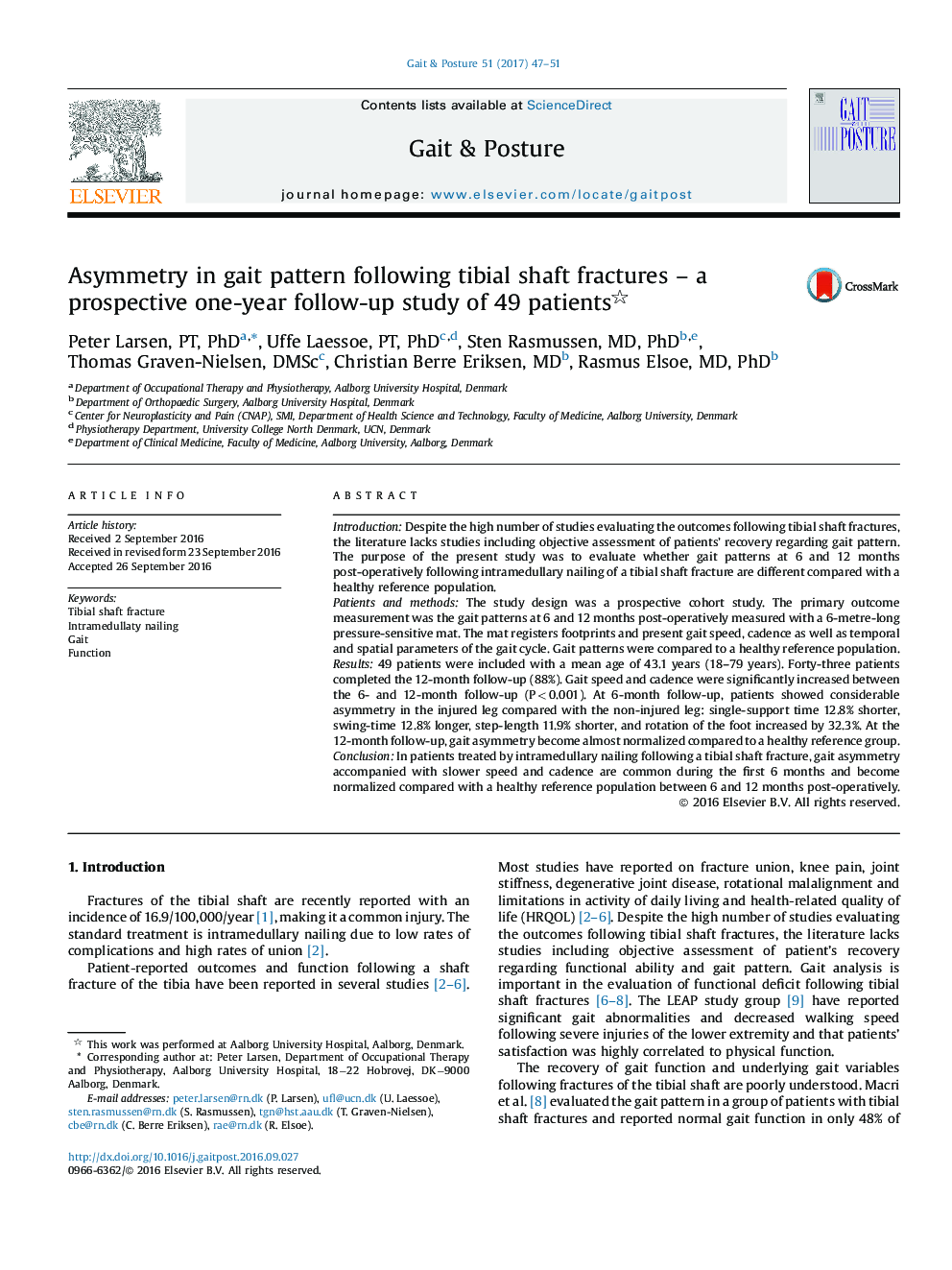| کد مقاله | کد نشریه | سال انتشار | مقاله انگلیسی | نسخه تمام متن |
|---|---|---|---|---|
| 4055509 | 1603844 | 2017 | 5 صفحه PDF | دانلود رایگان |
• Intramedullary nailing of tibial fractures and 1-year development in gait function.
• Gait asymmetry is common after the first 6 months post-operatively.
• Gait asymmetry becomes normalized between 6 and 12 months post-operatively.
• Weak associations between gait asymmetry and patient-reported HRQOL were observed.
• Regaining pre-injured gait function after a tibial fracture is a prolonged process.
IntroductionDespite the high number of studies evaluating the outcomes following tibial shaft fractures, the literature lacks studies including objective assessment of patients’ recovery regarding gait pattern. The purpose of the present study was to evaluate whether gait patterns at 6 and 12 months post-operatively following intramedullary nailing of a tibial shaft fracture are different compared with a healthy reference population.Patients and methodsThe study design was a prospective cohort study. The primary outcome measurement was the gait patterns at 6 and 12 months post-operatively measured with a 6-metre-long pressure-sensitive mat. The mat registers footprints and present gait speed, cadence as well as temporal and spatial parameters of the gait cycle. Gait patterns were compared to a healthy reference population.Results49 patients were included with a mean age of 43.1 years (18–79 years). Forty-three patients completed the 12-month follow-up (88%). Gait speed and cadence were significantly increased between the 6- and 12-month follow-up (P < 0.001). At 6-month follow-up, patients showed considerable asymmetry in the injured leg compared with the non-injured leg: single-support time 12.8% shorter, swing-time 12.8% longer, step-length 11.9% shorter, and rotation of the foot increased by 32.3%. At the 12-month follow-up, gait asymmetry become almost normalized compared to a healthy reference group.ConclusionIn patients treated by intramedullary nailing following a tibial shaft fracture, gait asymmetry accompanied with slower speed and cadence are common during the first 6 months and become normalized compared with a healthy reference population between 6 and 12 months post-operatively.
Journal: Gait & Posture - Volume 51, January 2017, Pages 47–51
